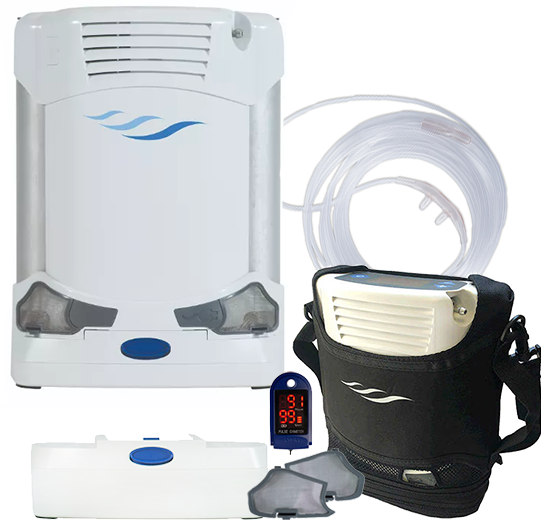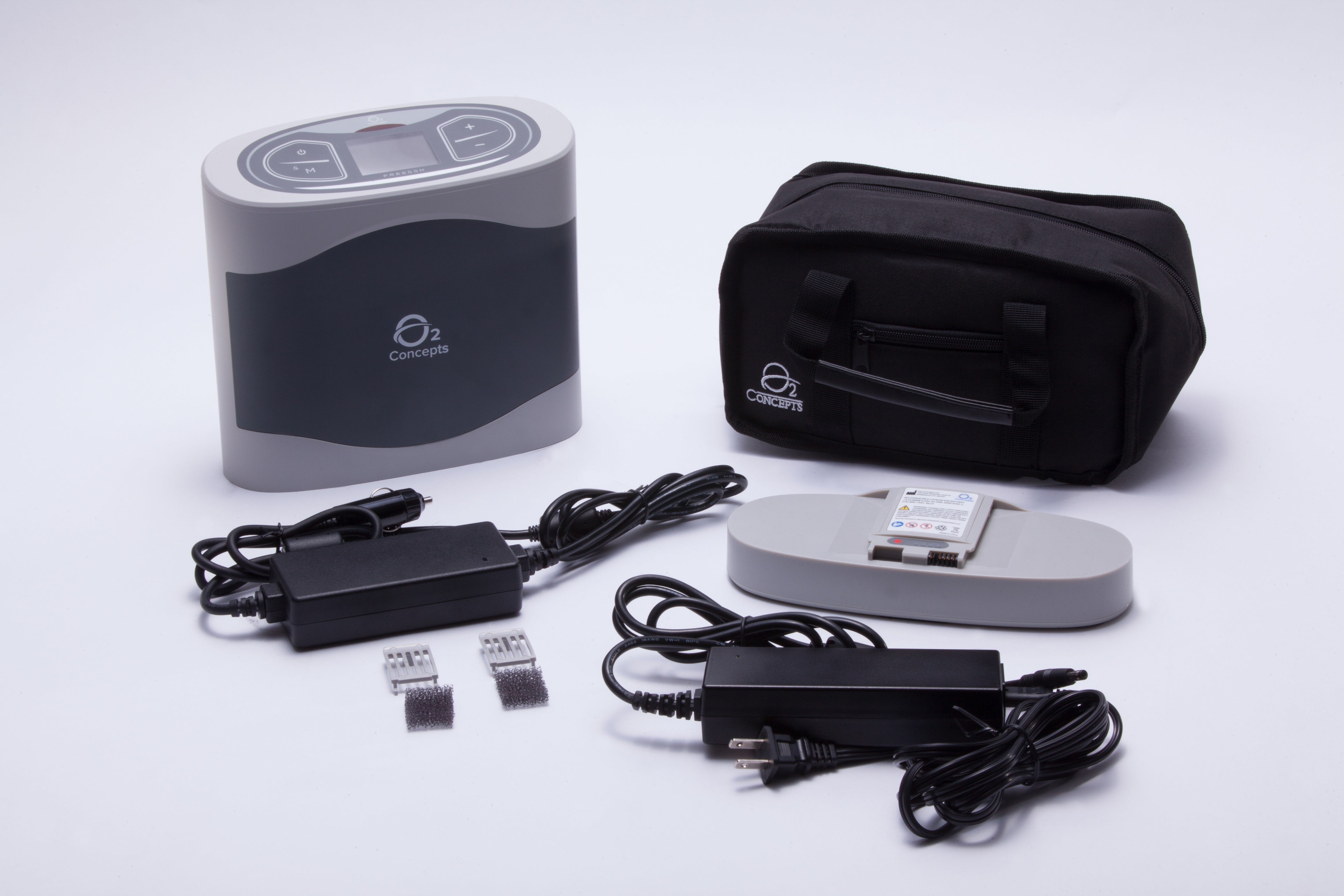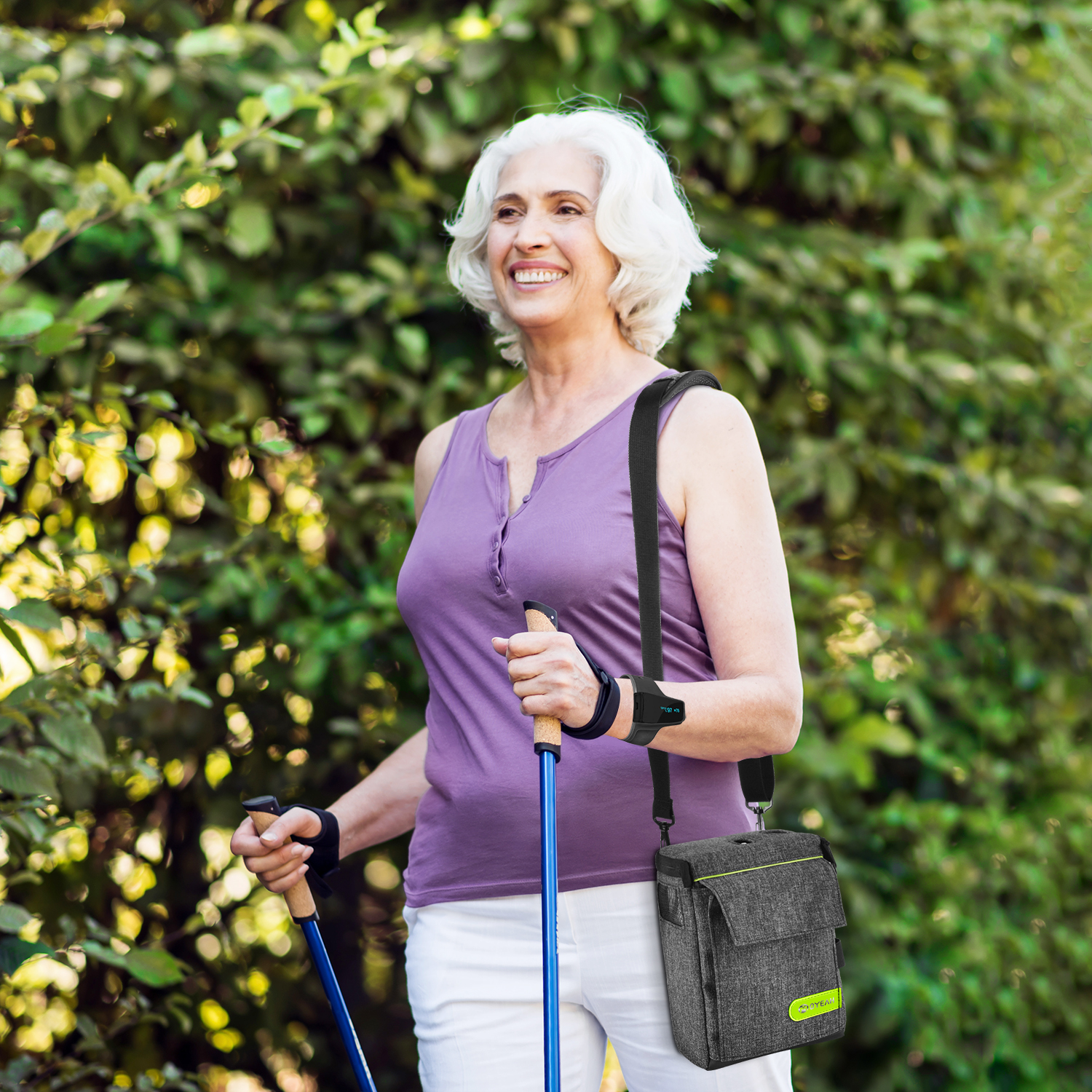Not known Details About Portable Oxygen Concentrators
Wiki Article
Portable Oxygen Concentrators Fundamentals Explained
Table of ContentsPortable Oxygen Concentrators for BeginnersThe Facts About Portable Oxygen Concentrators UncoveredHow Portable Oxygen Concentrators can Save You Time, Stress, and Money.The 30-Second Trick For Portable Oxygen Concentrators
Stationary oxygen concentrators were once the requirement, but these containers could consider 50 extra pounds and were really cumbersome (Portable Oxygen Concentrators). Now, mobile oxygen concentrators do the job, and they can match a purse or bag! The only point you must bear in mind is that mobile concentrators have much more limited oxygen shipment capacitiesThere are 2 major kinds of portable oxygen concentrators: pulse dosage and constant circulation. As the name suggests, pulse dosage concentrators offer oxygen periodically, only turning on when you breathe in. This sort of gadget is normally advised for COPD patients with restricted oxygen requirements, as the quantity of O2 that a pulse dosage concentrator can supply is fairly reduced.
This device can supply up to 3,000 m, L of oxygen every min, while pulse dosage gadgets have a tendency to top out at 1250 m, L. Continuous flow devices are the go-to for a lot of COPD individuals, as they're optimal for people who require 2 to 5 liters of oxygen a minute.
Currently that you have this overview to the different kinds of portable oxygen devices, pick the finest tool with the assistance of your medical professional.
The Single Strategy To Use For Portable Oxygen Concentrators
We know Americans use residential versions in home care scenarios. We questioned how well these mobile oxygen concentrators would certainly work in healthcare facilities. POC concentrators increase the percentage of oxygen in ambient air individuals inhale, whenever they need a boost. Private-use ones are tiny sufficient to lug about, and may help stay clear of the requirement to go to busy clinics and healthcare facilities.When it involves mobile oxygen treatment, there are 2 main alternatives for distribution. These are portable oxygen cylinders which consist of pressed oxygen gas, or oxygen concentrators, which use a battery powered system to compress and filter air, in order to create a constant supply of focused oxygen. In this message, AMS Composite Cylinders Technical Supervisor, Tony Morrin, contrasts the 2, checking out the pros and disadvantages of each oxygen delivery system for NHS clinical oxygen users in regards to individual freedom.

Portable Oxygen Concentrator Oxygen pureness is regularly greater when supplied from cyndrical tubes it never ever drops listed below 99. 6%, no matter the circulation rate needed. In battery-powered concentrators, purity is affected by circulation price, and might be 90% or less, relying on the devices. Whilst oxygen concentrators can be beneficial for clients that require a reduced circulation of oxygen, cylinders offer greater concentrations that can be much more suitable for patients with high flow requirements.
Our Portable Oxygen Concentrators Statements
Both systems require the patient to lug around equipment. For cyndrical tubes, this will consist of lugging a bag (and occasionally a trolley) and for mobile oxygen concentrators this will include the bag, trolley and power charger. Weight sensible, portable oxygen concentrators can be similar in weight, or in some cases, lighter than conventional aluminium cylinder systems.
They will need to enhance considerably if site web they are to provide the exact same degree of efficiency as similar composite cyndrical tubes. Oxygen always carries a safety and security risk. On one hand, ought to cyndrical tubes spring a leakage, they can create an oxygen abundant environment that can result in a rise in fire danger.

The difference is that there are significant ahead of time prices to acquiring a portable oxygen concentrator, but reduced running prices utilizing cyndrical tubes allows the purchaser to spread out the expense over an extended duration of time. One minor disadvantage of a portable oxygen concentrator is the noise portable systems make a considerable amount of noise throughout procedure, which numerous individuals find disruptive.
The Of Portable Oxygen Concentrators

Our high-grade carbon composite cylinders use high stress (300 Bar), reduced weight, and NLL (Non-Limited Life) efficiency, and are recognized for usage worldwide. More details concerning AMS Compound Cylinders Ltd can be discovered at .
Oxygen concentrators are designed with user movement in mind. Whether it's a desktop version for home usage or a smaller, light-weight version for on-the-go, these tools permit people to move easily without being tethered to a stationary unit. Especially for the ones particularly designed for portability, patients can carry them about, facilitating travel and day-to-day activities effortlessly.
One of the significant eases of making use of an oxygen concentrator is the elimination of the frequent need to re-fill oxygen containers. This not just decreases the logistical difficulties and frequent important source prices connected with refills however also makes certain that the customer has a much more predictable and steady resource of oxygen. Oxygen concentrators are developed to fit perfectly right into the home setting.
Report this wiki page